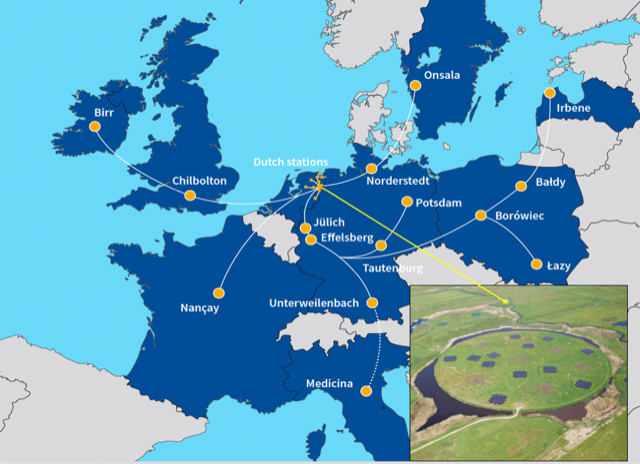The LOw Frequency ARray (LOFAR) is the world’s largest and most sensitive low-frequency radio telescope. It is a network of 52 geographically distributed antenna stations that stretches across Europe. With its versatility and its unique spectral coverage (10 – 250 MHz), LOFAR opened up new areas of study in solar physics, planetary and exo-planetary science, cosmic ray physics , pulsars, active galaxies and clusters, and the early Universe. Beyond the realm of astrophysics, LOFAR has also proven to be a very promising instrument for studying lightning in the Earth’s atmosphere and turbulence in the Earth’s ionosphere. There are over 750 LOFAR publications to date (released at a rate of ~ 2 papers per week) and hundreds of astronomers involved in the LOFAR science teams.
LOFAR has pioneered the field of scientific analysis involving huge data volumes and is setting the standard for all future radio astronomical facilities, including the SKA. Currently, services are under development to generate science-ready data for the users. By doing so, LOFAR will attract a much wider community to exploit its data and generate a dramatic increase of the science output from the instrument.
The staged upgrade of the system currently in progress ensures that LOFAR will remain a state of the art and a highly productive telescope between 2020 and 2030
Main technical characteristics
– frequency range 10-250 MHz
– 52 dipole antenna stations distributed across Europe
– 96 MHz instantaneous bandwidth
– max baseline ~2000 km
Website: https://www.lofar.eu/

